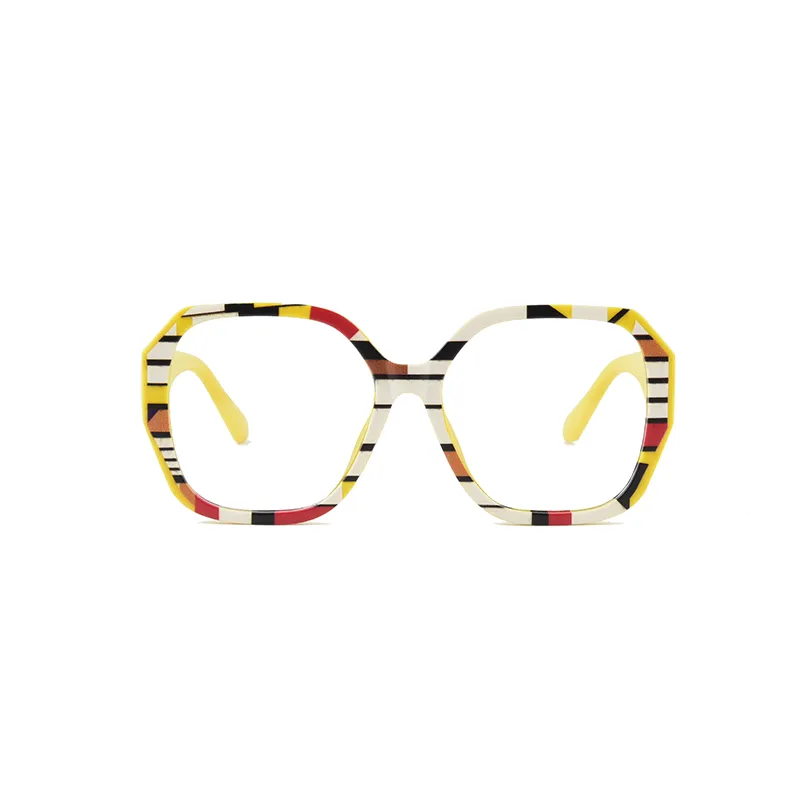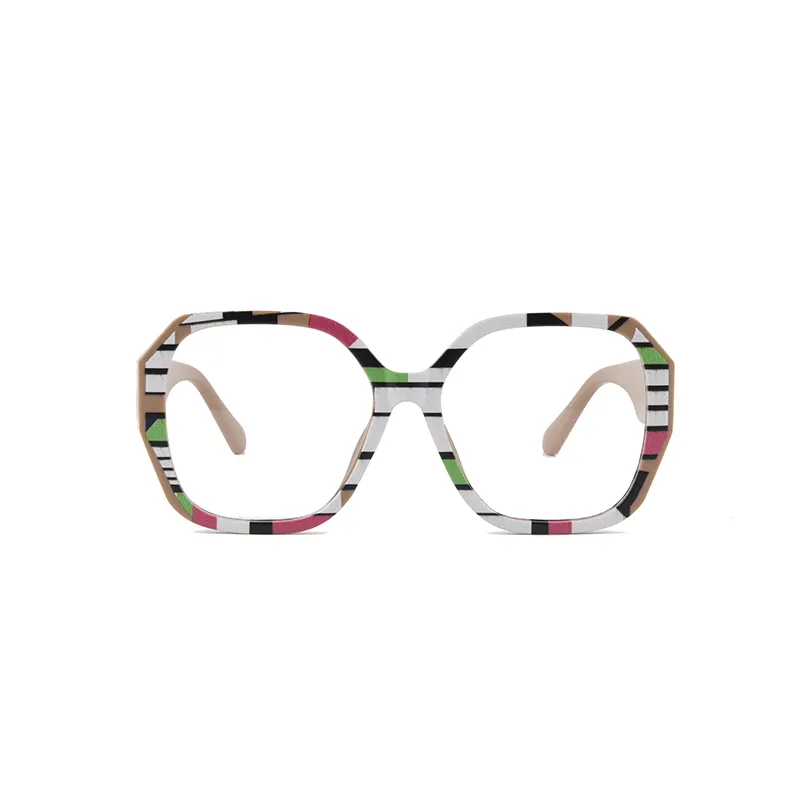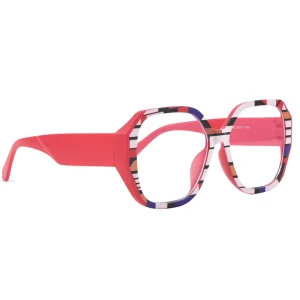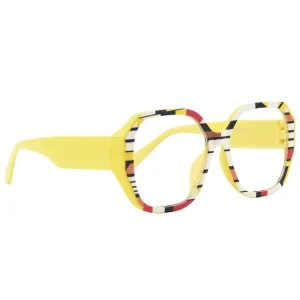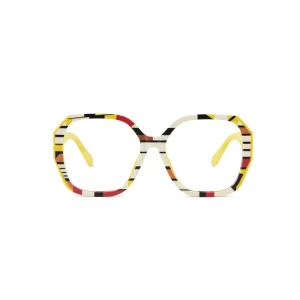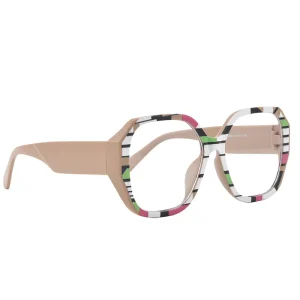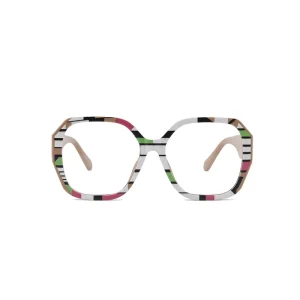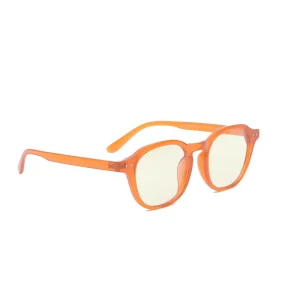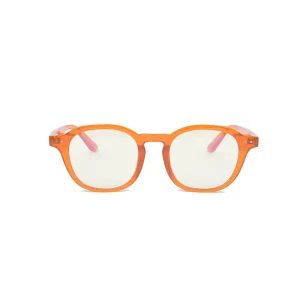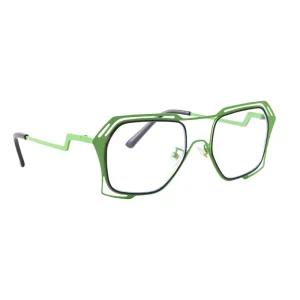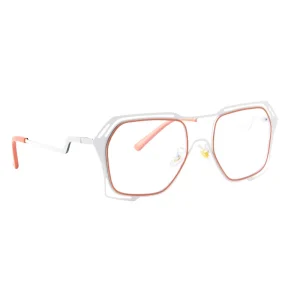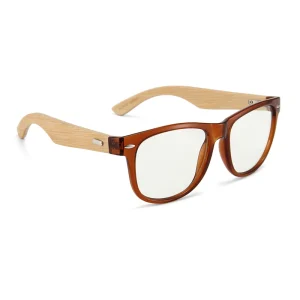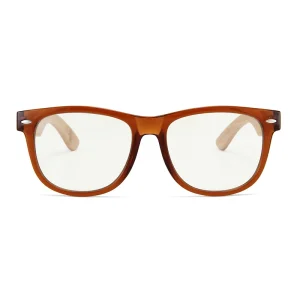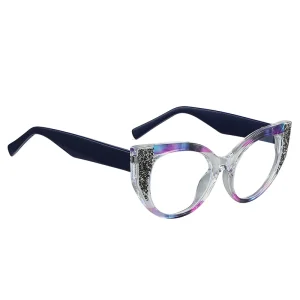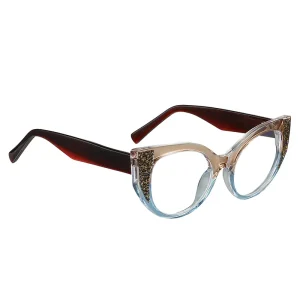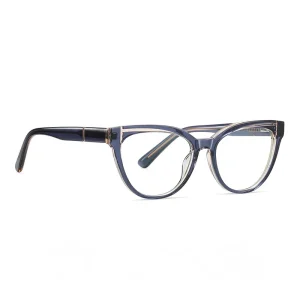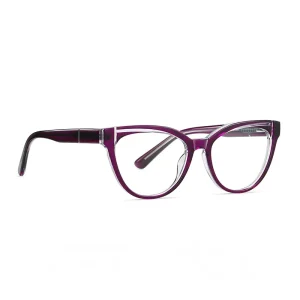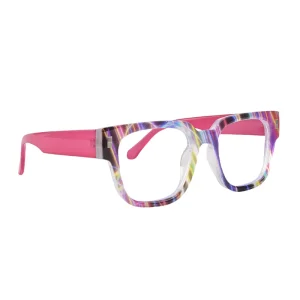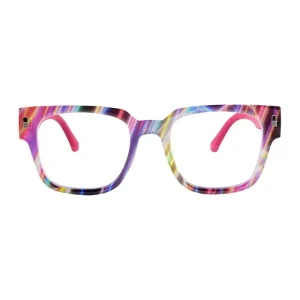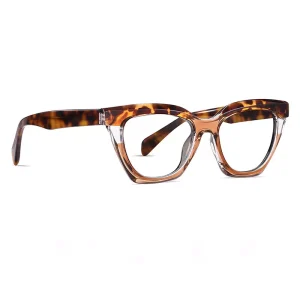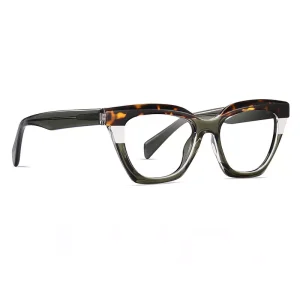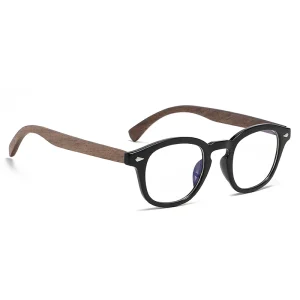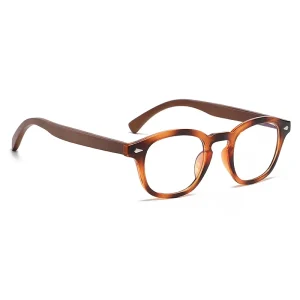Geometric Blue Light Glasses
Blue Light Glasses Specification:
Frame Material: PC
Lenses Material: PC
Hinges: Plastic
Lens Color: Blue light, Readers and Non-prescription both available.
Mold Opening: Acceptable
Customization: Your own design, logo is warmly welcome.
Logo: Printing, laser, metal logo, raised logo.
Mirror Coating: Customized colors.
Certificate: CE, FDA, BV, ISO 9001
Blue Light Glasses Features:
Blue Light Filtering: The degree of blue light filtering can vary among different blue light glasses models. Higher-quality blue light glasses may block up to 50% or more of harmful blue light wavelengths.The specific wavelength range of blue light blocked is an important consideration, as not all blue light is equally damaging to the eyes.
Lens Materials:
Blue light glasses can feature lenses made from a variety of materials, including polycarbonate, high-index plastic, and even glass.
The lens material can impact factors like weight, impact resistance, and optical clarity.Some lenses may also have a specialized coating or tint to enhance the blue light filtering capabilities.
Blue light glasses can feature lenses made from a variety of materials, including polycarbonate, high-index plastic, and even glass.
The lens material can impact factors like weight, impact resistance, and optical clarity.Some lenses may also have a specialized coating or tint to enhance the blue light filtering capabilities.
Frame Design:
The frame design of blue light glasses can play a role in their comfort and functionality. Wraparound or close-fitting frames can help minimize light exposure from the peripherals. Adjustable nose pads and temple tips can provide a customized fit for individual wearers.
The frame design of blue light glasses can play a role in their comfort and functionality. Wraparound or close-fitting frames can help minimize light exposure from the peripherals. Adjustable nose pads and temple tips can provide a customized fit for individual wearers.
Lens Treatments:
Beyond blue light filtering, some blue light glasses may feature additional lens treatments, such as: Anti-reflective coatings to reduce glare and eye strain
Hydrophobic/oleophobic coatings to repel water, oil, and fingerprints Scratch-resistant hardcoats to enhance durability
Beyond blue light filtering, some blue light glasses may feature additional lens treatments, such as: Anti-reflective coatings to reduce glare and eye strain
Hydrophobic/oleophobic coatings to repel water, oil, and fingerprints Scratch-resistant hardcoats to enhance durability
Prescription Integration:
Many blue light glasses can be fitted with prescription lenses, allowing wearers to benefit from both vision correction and blue light protection.The integration of prescription lenses can be done through various methods, including custom fabrication or clip-on attachments.
Many blue light glasses can be fitted with prescription lenses, allowing wearers to benefit from both vision correction and blue light protection.The integration of prescription lenses can be done through various methods, including custom fabrication or clip-on attachments.
What is Blue Light Glasses:
Blue Light Glasses Images:
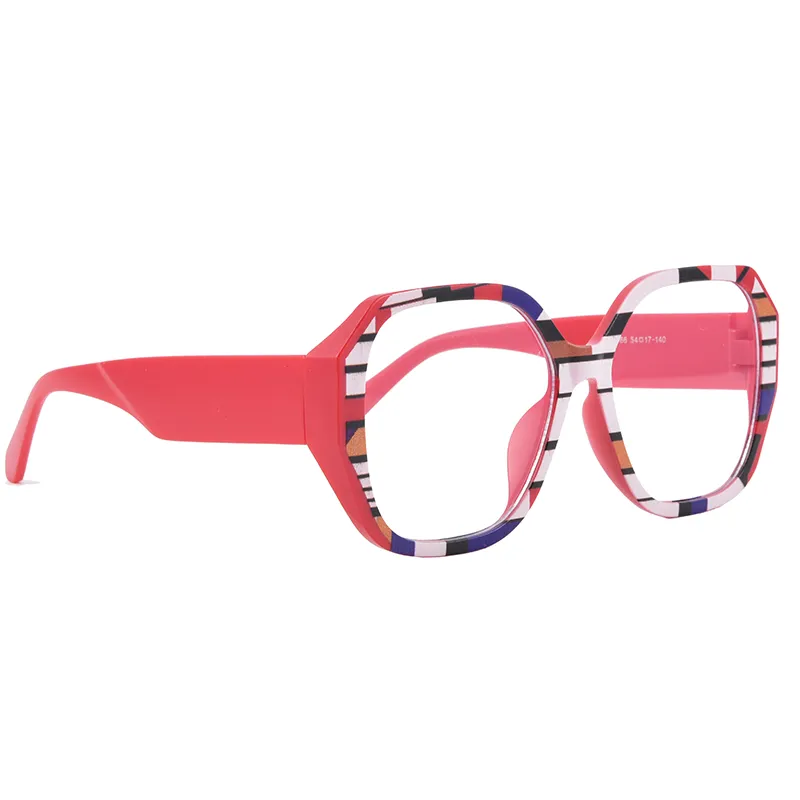
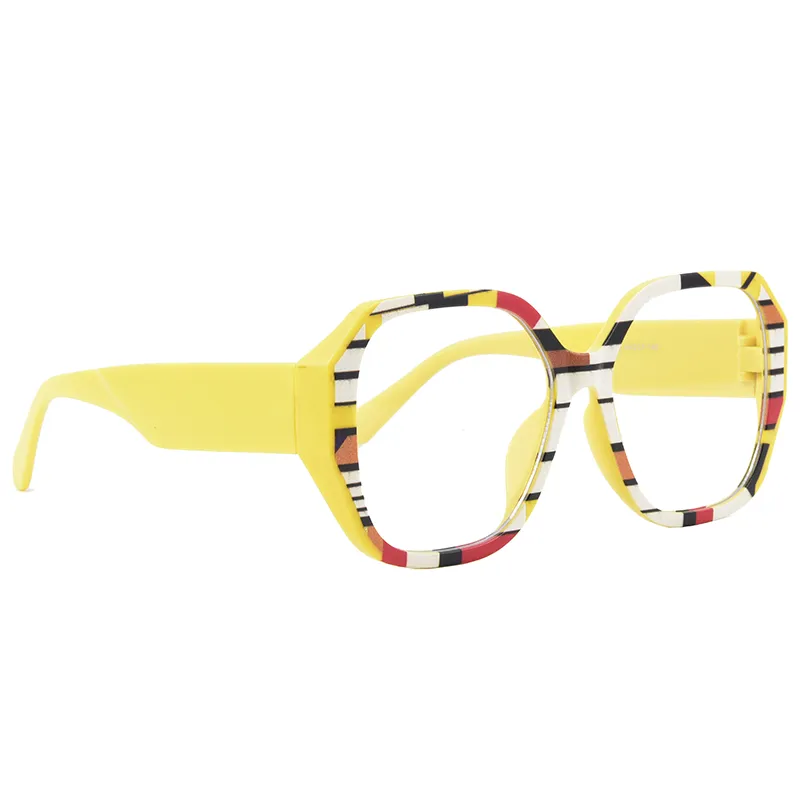
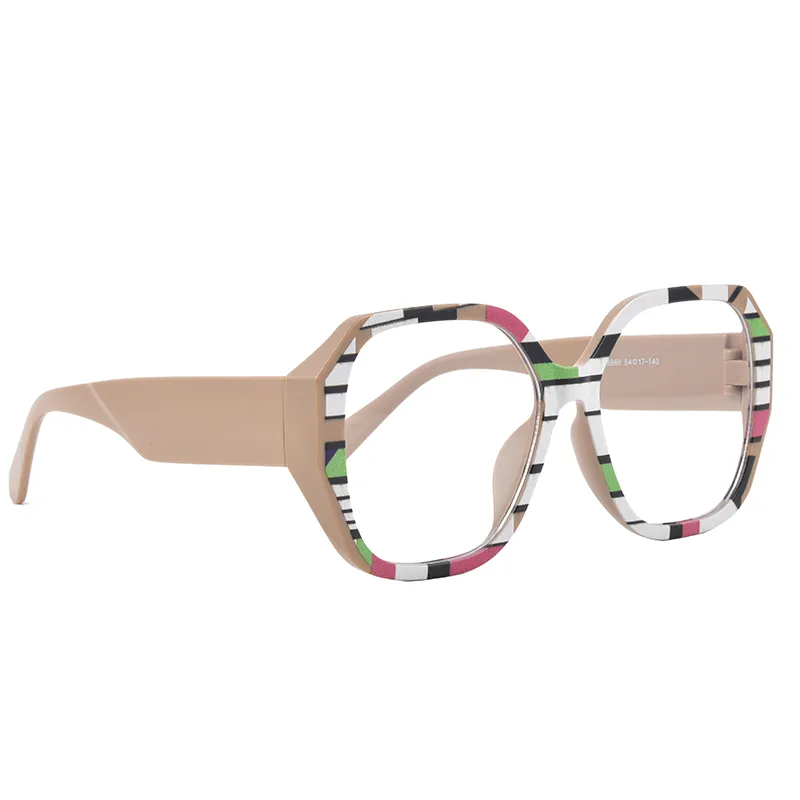
Materials of Blue Light Glasses:
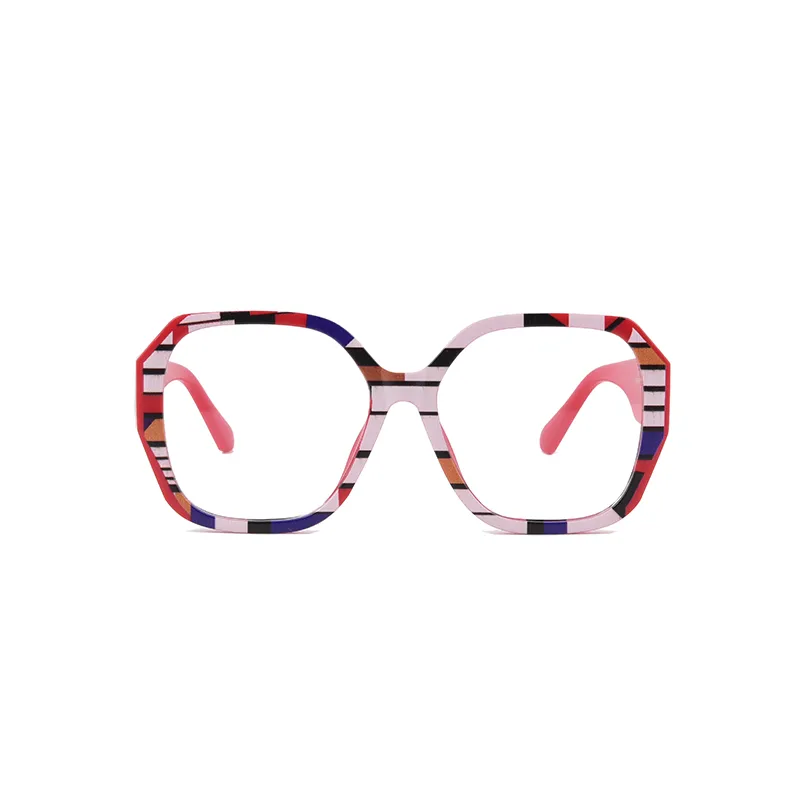
Information About Blue Light Glasses Factory
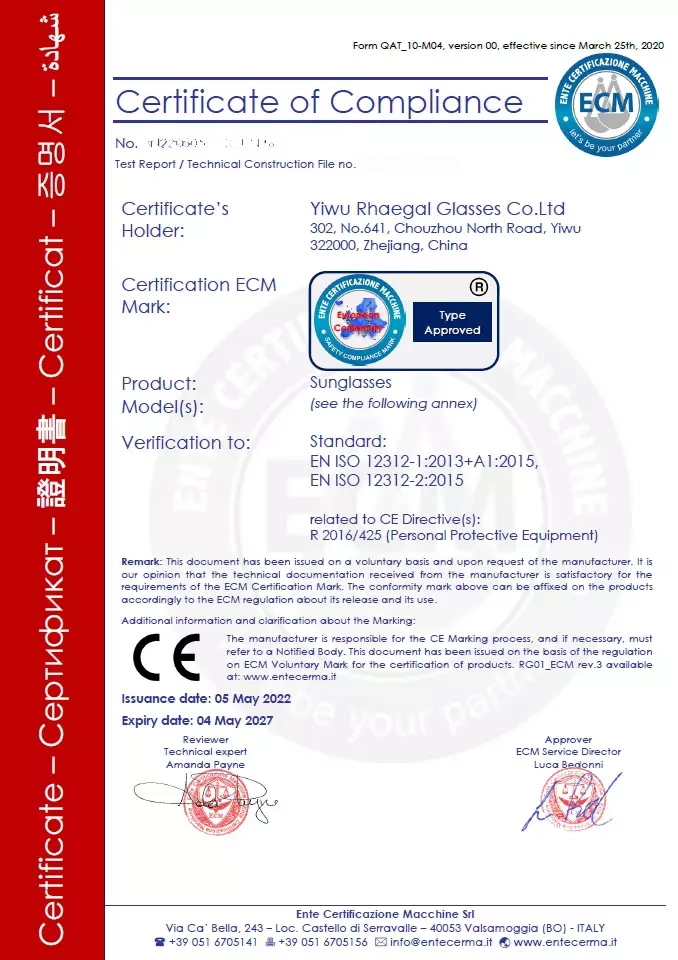
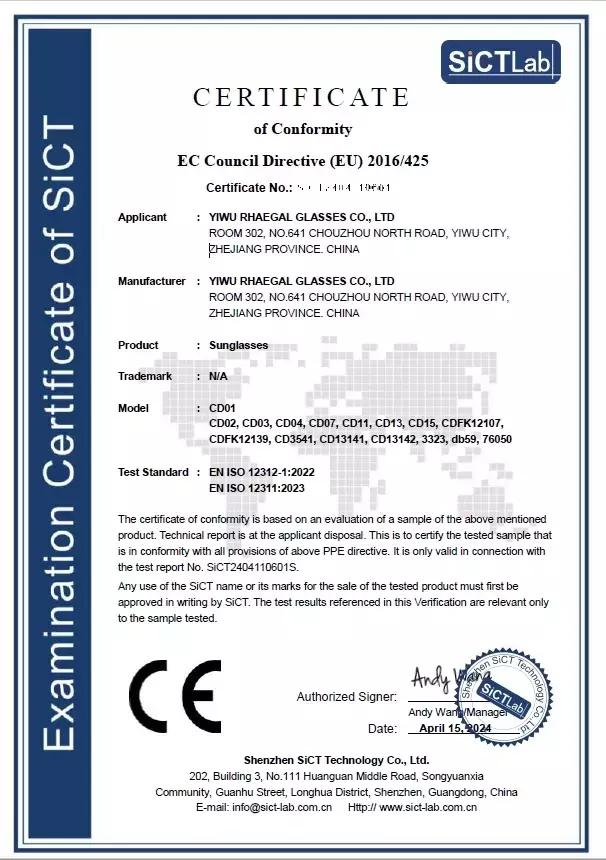
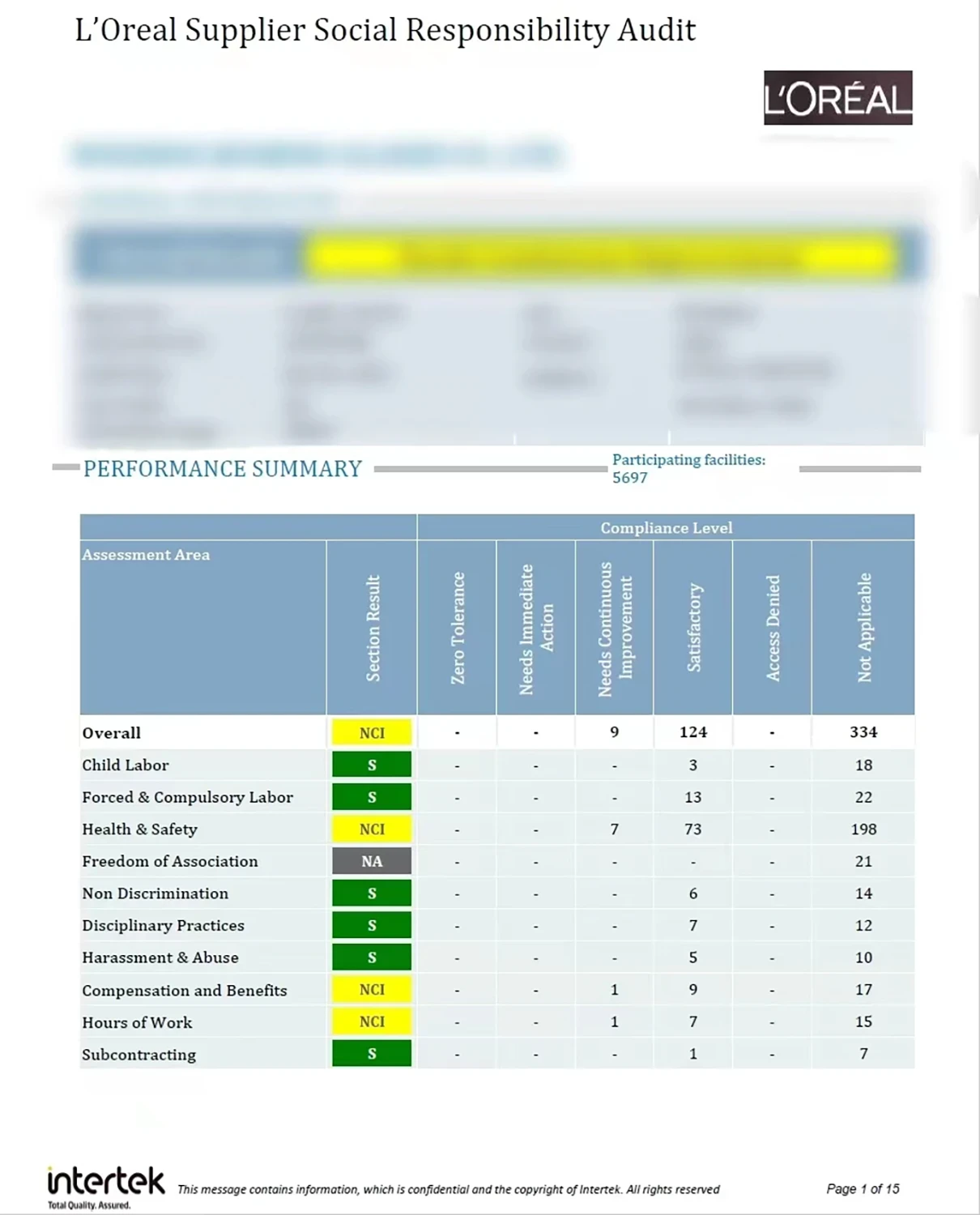
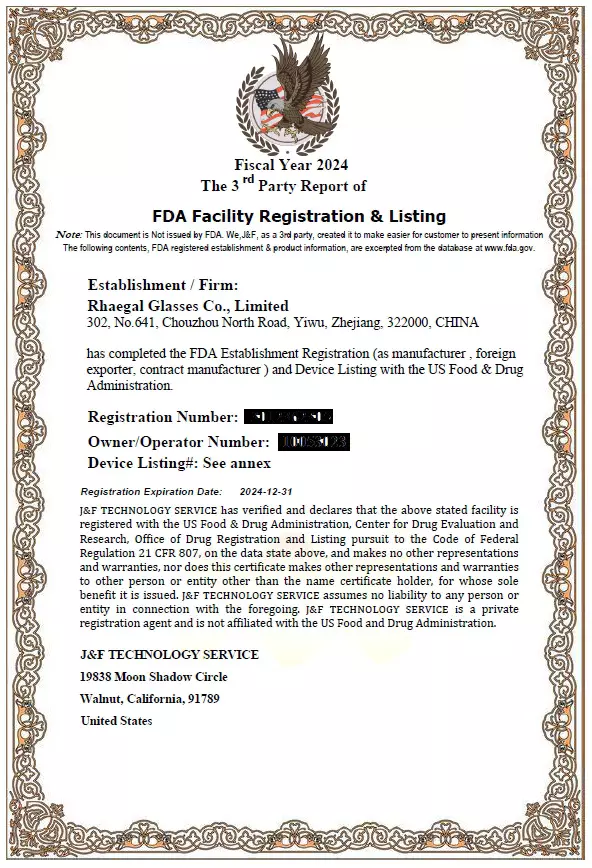
Frequently Asked Questions About Blue Light Glasses:
Question A: What Exactly is Blue Light, and Can It Be Harmful?
Answer A: Blue light is an integral component of sunlight, encompassing the high-energy, short-wavelength part of the light spectrum. While natural exposure is generally harmless, excessive exposure, particularly during nighttime, might disturb your sleep cycle and cause digital eye strain.
Question B: How Effective Are Blue Light Glasses?
Answer B: The science behind blue light glasses is subject to ongoing research. Many users report reductions in eye strain and improved comfort while using screens; however, definitive long-term benefits are still under study.
Question C: Should I Consider Getting Blue Light Glasses?
Answer C: If you frequently suffer from headaches, eye discomfort, or sleeplessness after extensive screen use, blue light glasses may offer relief. It’s recommended to consult an optometrist to see if they fit your specific needs.
Question D: What Proportion of Blue Light Should My Glasses Block?
Answer D: Optimal blue light blockage can vary. Glasses that block around 30% of blue light are a good starting point, though it’s important to balance this with how they might alter color perception on screens.
Question E: Is It Okay to Wear Blue Light Glasses Throughout the Day?
Answer E: Wearing blue light glasses during the day is generally considered safe. However, personal prescriptions or specific visual needs should be discussed with an eye healthcare professional.
Answer E: Wearing blue light glasses during the day is generally considered safe. However, personal prescriptions or specific visual needs should be discussed with an eye healthcare professional.
Question F:How Do Blue Light Glasses Differ from Computer Glasses?
Answer F: While both aim to enhance visual comfort during screen usage, computer glasses often include slight magnification for focus enhancement, whereas blue light glasses primarily filter out blue light emissions.
Question G: What Additional Measures Can I Take Against Blue Light Exposure?
Answer G: Beyond wearing blue light glasses, you can mitigate blue light impact by adjusting digital screen settings, taking regular breaks during screen time, and minimizing screen usage before sleep to encourage better sleep quality.

